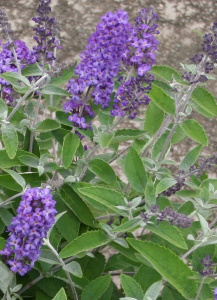Lilacs are to the garden what Madeleines were to Proust.
One whiff of the fragrance wafting from the flowers. It's likely you're back to the first time you smelled this heady perfume. It's an aroma that starts off sweet in the morning. Then intensifies to something richer and more seductive as the day grows warmer.
It may seem counter-intuitive to plant a large shrub that only flowers for a few weeks in late spring. However, when you're talking about lilacs, it's maybe not so crazy.
There's seven colors (depending on the variety: white, violet, blue, lavender, pink, magenta, and purple, with many shades of each). Plus, different sizes ranging from dwarf to hedgerow height, there's a lovely lilac for nearly every garden.

Here's advice on how to grow and use these stunners in the landscape. From our Monrovia Craftsman (and self-proclaimed lilac-maniac) Lydia Gompper.
According to Lydia, with some planning and attention to bloom time, you can plant early-, mid-, and late-season varieties. These will blossom in succession (particularly if the weather is cool), yielding flowers for at least two months each spring.
(See her recommendations for mix-and-match varieties to extend the flowering season. Plus some lilacs with lower chill requirements, typically to zone 8.)
Our 4 Favorite Ways to Use Lilacs in the Landscape

Add them to a mixed border
Even without the flowers, lilacs would be worth planting as they’re hardy and easy to grow. After blooming, lilacs fade into the background. This provides a dense backdrop of heart-shaped leaves against which later blooming shrubs. For instance, hydrangeas and roses, and taller perennials are strikingly silhouetted.
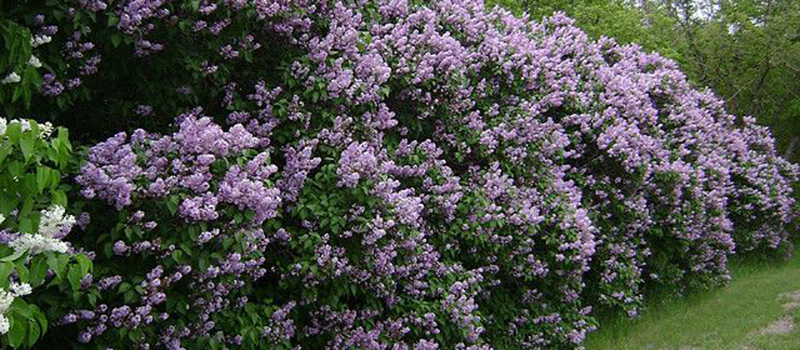
Have a stunning, dense hedge
Varieties range in size at maturity from 4-foot-tall bushy types to 20-foot-tall common lilacs to 30-foot trees. Taller varieties such as Common lilac (Syringa vulgaris) are sensational massed as a hedge. Plant them 10-feet apart on center; they’ll fill out in about five years.

Give a single shrub a place of honor
It’s common in colder zones to find huge stands of old, mature common lilacs (Syringa vulgaris) pretty much growing wild. Few gardens today could devote so much space to just lilacs, but even a solitary one is something pretty special. Use as a striking accent shrub in the lawn or against the house’s foundation.
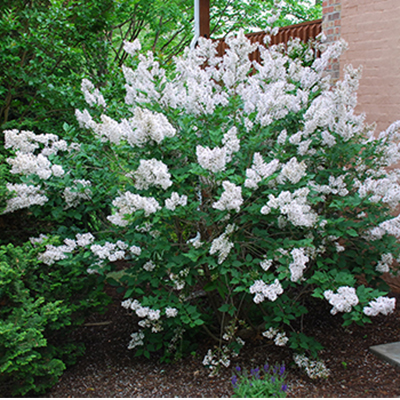
Sneak a compact version into a smaller space
You will most often see taller varieties of lilacs. Although there are some such as the Bloomerang series and Dwarf Korean Lilac that have a more restrained habit. These are ideal for tighter spaces. Such as near front doors, the no-man's land between the garage and the house, or just a smaller backyard.
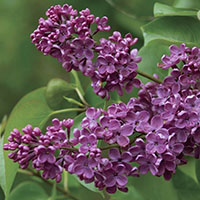
(Zone 3 – 8)
What Lilacs Want
- Lilacs aren’t fussy, but they do need at least 6 hours of full sun. (If they lack enough light, lilacs will grow, but won’t flower as well.)
- Most lilacs will deal with average garden soil. Although they prefer fertile, humus-rich, fairly neutral, well-drained soil (add compost if your soil needs a boost).
- Just a handful of balanced fertilizer (10-10-10) applied in late winter.
- While they don’t like wet feet, lilacs need steady moisture. Water if summer rains don’t happen.
- Lilacs are pretty much impervious to insects and most diseases, but they’re also super attractive to pollinators, especially butterflies.
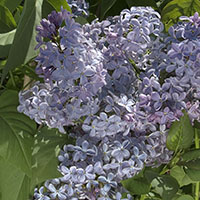
Zone: 3 – 8
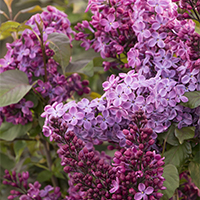
Zone: 5 – 8
Pruning Lilacs
- Lilacs need to be pruned annually in order to produce tons of blooms. And, if flower clusters are getting smaller, it’s really, really time to prune!
- The ideal lilac shrub has about 10 canes and produces flowers at eye-level, which requires annual pruning.
- Lilacs bloom on old wood so the time to prune is in spring, right after they bloom. Start by removing any dead wood. Then prune out the oldest canes down to the ground. Remove suckers at the same time (suckers are branches that sprout from the roots).
- Lilacs that have been left unpruned can be clipped into shape, but it’ll take some work over a three-year period. The first year, choose the oldest, least productive third of the branches. Cut them all the way to the ground. Follow the same process in the second and third years. It might take a few years for your shrub to fully flower again. (But, so worth it.)
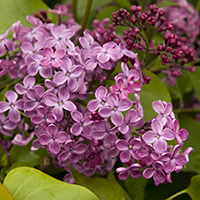
Zone: 2 – 7
F.A.Q.
Q.: I live in zone 8 or zone 9. Can I grow lilacs?
A.: Most lilacs need a long period of winter chill for buds to mature and bloom the following spring. The good news is that several cultivars have been bred for warmer zones. (By which we generally mean up to zone 8). See here for more.
Q.: I planted a lilac and it isn’t flowering (much or at all)?
A.: A little patience yields big rewards. Young lilacs can take up to 3 years to reach maturity and bear flowers.
Q.: How can I get my lilac into a tree form?
A.: While most let our lilacs grow into dense shrubs, a lilac tree is a lovely addition to small yards. Taller Syringa vulgaris cultivars such as ‘Sensation’ and ‘President Lincoln’ would be perfect for this. Start with a young shrub. (About 3 years old, which is typical of what you'll see sold at nurseries in a five-gallon container.) Then remove the lower branches and let one stem develop. It might take 10 years before you have a fully-grown specimen tree, but it’ll be a wow.

